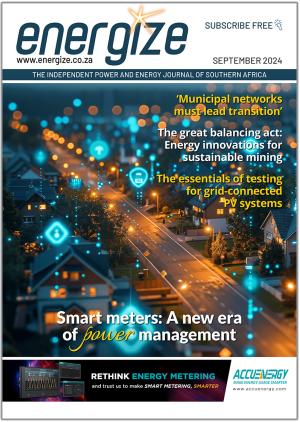The new year opened with mixed messages from Eskom:
Firstly, Eskom announced that the full load rejection test performed on Unit 1 of the Koeberg nuclear power station on Saturday 30 December 2023 was completed successfully. This. The utility explained, was the final test that needed to be performed following the installation of the new steam generators, in accordance with the South African Grid Code (SAGC) requirements. The success of this test means that Unit 1 will soon be resynchronised to the network and start supplying an additional 900 MW to the grid.
This might be short-lived however, because the operating license for both Units at the Koeberg nuclear power station expires in July this year and there is no guarantee that it will be extended for a further period. Unit 1 has been offline for over a year, with work having started in December 2022.
The utility says it plans to undertake similar steam generator replacement activities on Unit 2 this year.
Then on Sunday, 31 December 2023, Eskom announced that Unit 5 of the Kusile coal-fired power station had been synchronised to the national grid for the first time at 17h22on that day. This unit will contribute an additional 800 MW to the country’s power system and is additional to the rest of Eskom’s grid capacity. It will supply electricity intermittently during the testing and optimisation phase over the next six months before being transferred into commercial operation and the capacity officially added to the current Eskom fleet.
The utility reported that progress was being made on the remaining construction and commissioning activities at Kusile Unit 6 and at completion, the station’s six units will generate 4800 MW. This will make Kusile South Africa’s largest construction project and will be the world’s fourth-largest coal plant.
The Kusile power station is fitted with wet flue gas desulphurisation (WFGD) emissions abatement technology in line with current international practice to ensure compliance with air quality standards. WFGD technology is used to remove sulphur dioxide from the flue gas before discharge into the atmosphere. Kusile is the first power station in Africa to implement this technology.
Further, Eskom reported that repair works to the permanent stack for units 1, 2 and 3 were progressing well. Intensified efforts were also being made to return Medupi Unit 4 to service by the end of July 2024. This, together with the successful completion of Kusile Unit 5 and the return of the three Kusile units would further improve the energy availability.
But, while all these statements about successes were being made, load shedding, suspended over the festive season, was reinstated following the reported loss of 5000 MW of generating capacity. Stage 2 load shedding was implemented first increasing to Stage 3 later. Eskom says that it suffered a “setback”, losing 5000 MW of capacity when six generating units failed, reducing output by 3000 MW, and three generating units were late in coming back online reducing output by a further 2000 MW. The power utility says planned and unplanned outages reduced output by 24 000 MW.
Thus, the power utility's energy availability factor (EAF) was hovering around 50% on 2 January, with commentators saying that Eskom is entering what is known as a 'utility death spiral'. This occurs when utilities face declining demand brought about by consumers sourcing power from other sources, such as solar PV, to protect themselves from power interruptions and ever-increasing tariffs. Analysts agree that Eskom's EAF will continue to decline and that the country's load shedding woes are far from over.
"Eskom is too big to fail" they said. But it has failed. Treasury seems to know this. South Africans have been offered tax incentives to buy solar panels before March 2024. Now more than ever, individuals and businesses must invest in rooftop solar to protect themselves from Eskom's imminent demise.















